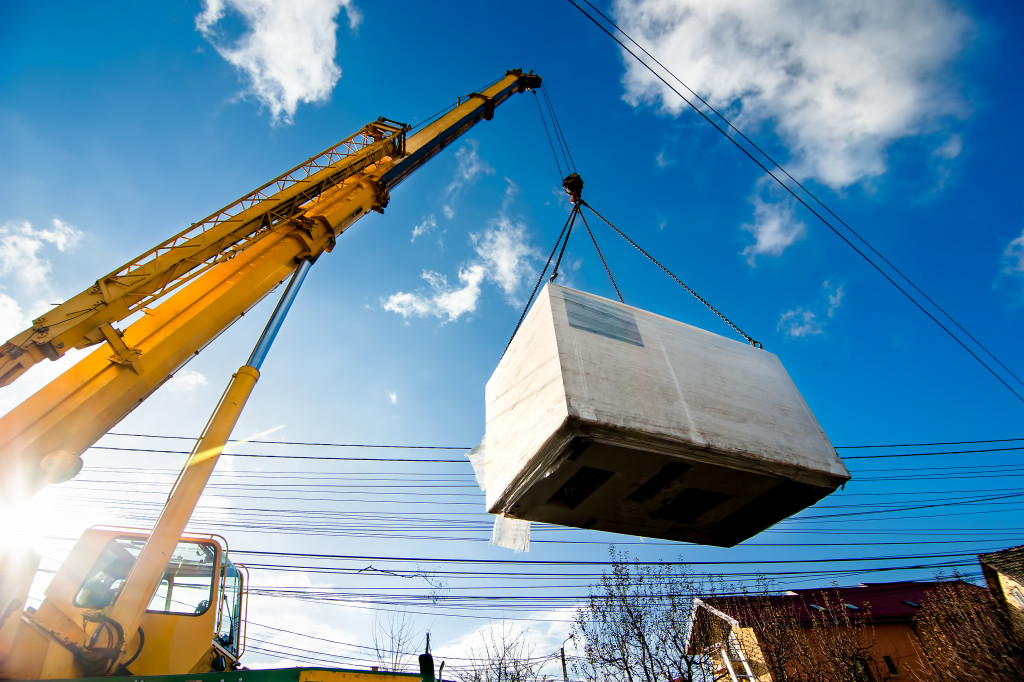- When selecting what you need, consider the crane parts and ensure they are high quality.
- Properly considering crane capacity is critical for the safety of workers on site, successful completion of tasks, and efficient operation.
- It is vital to ensure that the crane site and access routes are chosen carefully to secure successful working conditions.
- Proper attention should be given to developing pre-lift plans and ensuring adherence to those plans before lifting operations.
Cranes are integral to any construction project, whether a small residential building or a large commercial complex. They provide the lifting power needed to move heavy materials and equipment safely and efficiently.
However, there are several important considerations to remember when using cranes for construction projects. By considering all these things, you can ensure your crane operations run smoothly and without incident throughout your construction project.
Crane Specifications
Here are some factors about cranes that you need to know about when using them in construction projects:
Crane Parts
When using cranes for construction projects, it is essential to consider the crane parts carefully when selecting what you need. Not only do you need to choose the appropriate items based on their purpose, but you should also ensure that the parts are of high quality and able to withstand the rigors of your task.
It is vital to look for durable crane parts for sale so that repairs are kept to a minimum, and potential accidents with construction equipment are avoided. High-quality parts will last longer, provide excellent reliability, withstand harsh conditions, and increase safety.
Quality control measures can be adopted when assessing whether or not the crane parts meet necessary standards before they are used in a project; this ensures that construction goes as planned and worksites remain safe.
Crane Capacity

The appropriate capability of the crane must be determined based on a range of factors such as desired reach, type and size of the load, terrain, men working under load (MWL), and any additional attachments that may require extra power from an engine or winch.
Properly considering crane capacity is critical for the safety of workers on-site and in the immediate vicinity, successful completion of tasks, and efficient operation. A safe and secure lift requires that sufficient forces are balanced at all times, which requires understanding how each component will affect the force requirements of a crane operation.
Crane Location & Accessibility
It is essential to consider crane location and accessibility. Before choosing a crane, it should ensure that the course can accommodate the range of motion required by working with cranes; otherwise, progress will be hindered or even halted altogether.
It is also essential to ensure that any necessary routes or access points are open to ensure the delivery of materials and handling of logistics. Proper crane safety relies on having the best location and accessibility to guarantee efficient and safe usage during the entire process.
Load Management & Rigging Practices
The use of cranes during construction projects is an essential element of efficiency. Consequently, it is vital to ensure that appropriate load management and rigging practices are always rigorously followed. Proper attention should be given to developing pre-lift plans and ensuring adherence to them before lifting operations.
The supervision of lifting activities must also remain the responsibility of experienced personnel with the requisite professional capacity. Doing all of this helps guarantee not just the slightest risk for personnel involved in the crane operation and other tasks on the worksite but also reasonable assurance that items will be lifted in an organized manner within existing restrictions for capacity and performance.
Operator Certification & Training

Workers must be appropriately certified and trained to operate the machinery. Each crane type is certified for specific jobs and tasks, as well as associated safety regulations and working conditions. Suppose a worker does not have the required certification level and experience. In that case, they may be unaware of how to use the machine safely or effectively, thus posing a risk of injury or damage to property.
Having a qualified operator who knows their crane in and out can save companies time and resources, while making sure that everyone involved remains safe on the job site. Furthermore, regularly scheduled training sessions can help operators stay up-to-date with industry standards in terms of safety procedures and crane operation techniques.
Weather Conditions
Properly considering weather conditions when using cranes for construction is of critical importance. Windy conditions can be highly dangerous and create unsafe working conditions. A warm up plan should always be employed before the commencement of crane operation; this plan should include safety measures such as daily ladder inspections and pre-operational checks.
A crane’s operational speed should also consider factors such as wind direction, wind speed and atmospheric pressure. If the winds are forecasted to go above the laying down speed of the crane, then operations must cease immediately until further notice from certified authorities. Furthermore, having prevented rain barriers in place is also an effective way to ensure safety for workers.
These are just some of the considerations to consider when using cranes for construction projects. By considering these points ahead of time and ensuring that all safety protocols are followed, you can ensure your project runs smoothly and without incident.




